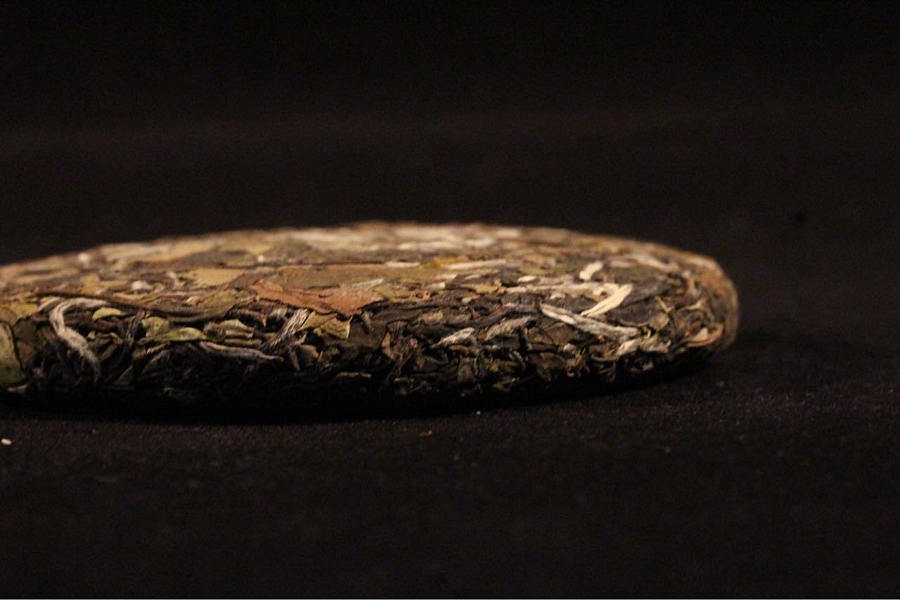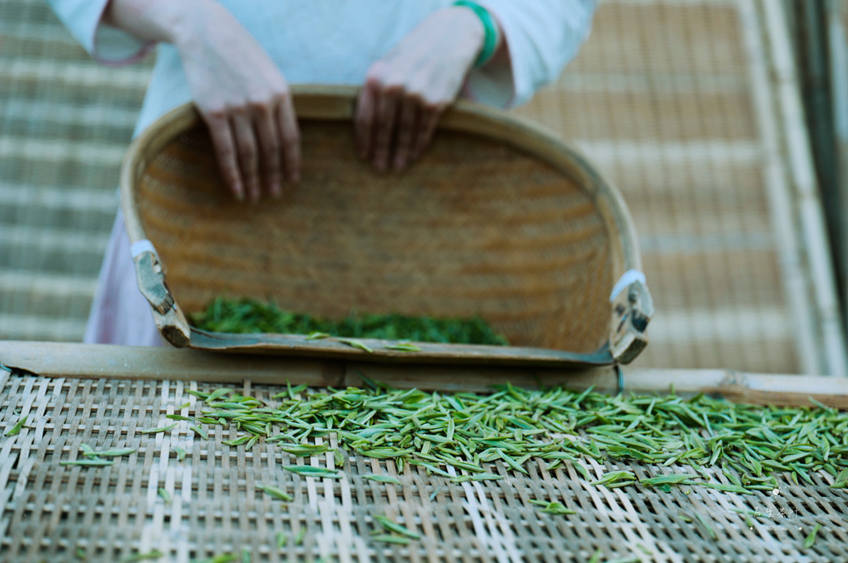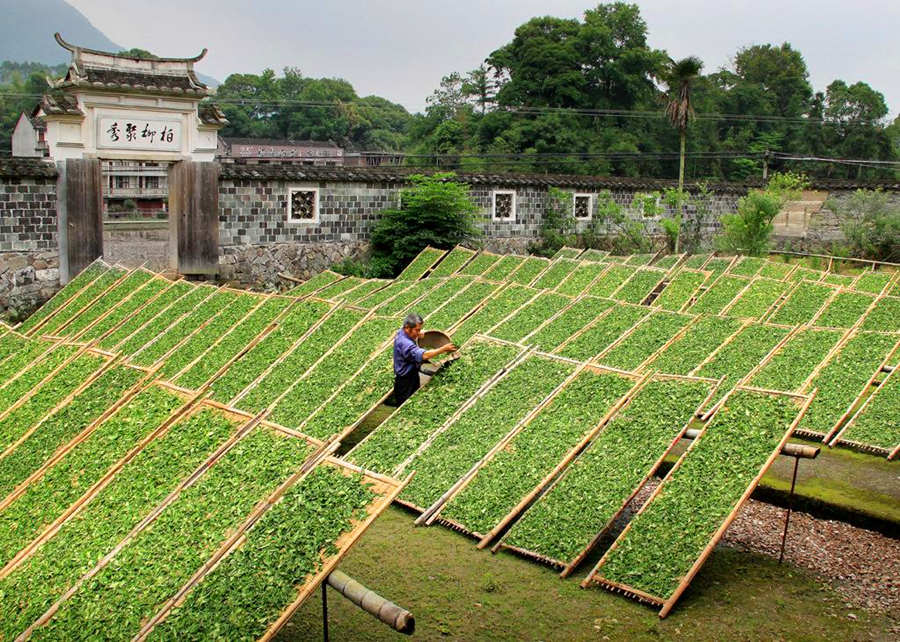Fuding White Tea
Fuding White Tea is one of the earliest processed Chinese tea. As for its benefits, remember that Fuding White Tea has the highest flavonoid (powerful antioxidant) & amino acid. And the simple processing drives up the interferon secretion of immune cells 5 times. Together with the sweet after taste, Fuding White is quickly becoming a very well accepted tea in China these years.
History – When White Tea Was Initially Produced in Fuding
White tea started to be known among Chinese tea drinkers around 2015. Before that, it was primarily consumed in Fujian province and nearby areas, in spite of the long history tea growing (some 1750 years) there.
Archaeological finds confirmed the tea growing & trading at northeast Fujian province around 265-316 AD. Glazed tea cups, tea pot (for boiling tea) was excavated from ancient tombs.
From the 7th century, tea growing expanded to northern Fujian area. Local tea was adopted by local government as a royal tribute. From the 10th century, royal tea tributes included tea from a large area in east and north Fujian province. Tea competition was popular.
In Song Dynasty (10th – 13th century), each year around Qingming festival (mostly in April), after the first tea was picked, tea competition started. From the emperor to the street people, tea competition attracted the attention of all, like the current football in Europe.

At the beginning of 14th century, various types of Chinese tea include Green, White, Black and Flower appeared. At the end of Qing dynasty, late 19th century, international tea trading started in northeast Fujian. Tea production reached a high in the early 20th century.
As mentioned above, white tea appeared in the 14th century. But the then white tea is different from the present white tea. Researchers today, after much study of history and the tea trees/bushes, still cannot pinpoint the exact time of the origin of today’s white tea. From the two major schools, it is estimated between 1770s and 1870s, around Fuding area.
One legend has it that a Mr. Chen found the mother tea bush in Taimu (Great Mother) Mt and transplanted to Fuding to cure his mother of eye problems. The mother bush in Taimu Mt was also recorded in a book “Notes of Fujian” in early 17th century by Mr. Zhou Lianggong, deputy Financial Minster of the Qing Dynasty. It says “there is Green Snow Bud in Taimu Mt. We call it White Needle today. It excels in both color and fragrance. The best grows at Hong Xue Dong area. It is cold in nature (terminology in herbal medicine, meaning “Yin”) and function like rhino horn. It is a magic cure for measles and exported at the price of gold.”
Fuding is located on the NE coast of Fujian province, 27 N. Latitude 120 E. Longitude. It enjoys a mild subtropical sea climate and the 90% of terrain is mountainous areas with the highest at @1100m above sea. Plenty of rainfall and densely wooded mountains gives birth to thousands of creeks and rivers, creating large areas of mist, making Fuding an ideal place for Chinese tea growing, including white tea.
Category
Fuding White Tea is divided into 4 categories of Silver Needle, White Peony, Tribute Eyebrow, Longevity Eyebrow based on picking time and tea leaves. The best is the Silver Needle, which consists of buds only and is the first pick of the year. In the old times, White Tea referred to the Silver Needle which has a good layer of white hair. Then comes the White Peony which consists of 1 bud and 2-3 leaves. White Peony is picked a few days after Silver Needle. White Peony was developed in the late 19th century. The final pick is the Tribute Eyebrow and Longevity Eyebrow which consists of more leaves. For easier storage & transportation, these two have been pressed into tea cakes and shipped around the world.

How to Make Fuding White Tea
Fuding White Tea is a slightly fermented Chinese tea. A brewed white tea takes a pale yellowish color and the after taste is sweet. Procession of Fuding White Tea is the most natural. Dehydration and/or together with fire baking are the only process(es) needed. Yet these processes are the most challenging among all tea processing.
Traditional dehydration requests 3 consecutive sunny days. The thin layer of freshly picked tea leaves are put on large bamboo plates under the morning sun to wither a bit. Then it is put in shady areas for continued dehydration. Dehydration depends on the weather & temperature. Any rainy day could disrupt the process and decrease the taste and value of the tea.
Traditional Chinese tea processing cannot produce large amount of tea. In the early 20th century, with the sharply increase of market demand, machineries were introduced. Indoors withering inside a large glass house is used. But indoors temperature changes quickly so the tea processing master has to be present most of the time. Another solution involves stacking the large Bamboo Plate holding fresh tea leaves. Then a forceful wind blower (electric) is applied.
This is confirmed by my 2019 study trip (Wei, general manager of Easy Tour China) to Fuding and the important historical tea areas nearby.
Wei’s Fuding White Tea Trip 2019
My first stop at a tea farm near a beautiful reservoir has a few buildings surrounded by large stretches of tea farm. The machineries are mostly simple but they make it possible to process white tea in bad weather. Water is heated and then goes thru coiled pipes heating up the air around it. The heated air is then blown into a room where stacks of freshly picked tea leaves are stowed on shelves. Air temperature is strictly controlled. On the other side of the building, fans are installed to force the cooler air out.
From the reservoir tea farm, my journey continued to the largest Chinese tea trading center in a small town not far away from Fuding. The one hour drive passed 2 towns and had a strong presence of white tea makers’ advertisement boards. There was occasionally the traditional black tea signboards, Kungfu tea.

A strike of luck took me to the small tea house on a back street. Here the legendary Chen family runs their family business. They were proud of their ancestor who took a brunch of the mother bush “Green Snow Bud” in Taimu Mt and expanded it in Fuding. I was told that Fuding government is making strong regulations about tea growing. Drones were deployed to spray low-toxin fertilizers and pesticides. Inspection teams are sent out to fetch soil & tea leave samples. Green farming is encouraged.
At Fuding, my last stop is a relatively modern Chinese tea processing & packaging factory, whose boss I met in the largest tea expo in China in Shenzhen the previous year. Their unique sweet white tea intrigued me. Among the 3 tea makers, their tea farm has the highest elevation, around 800 meters above sea level. She showed me pictures of the farm and processing facilities and I immediately regretted that I did not allocate enough time for Fuding.
I am glad my Fuding White Tea purchase from the 3 stops is rewarding, at a reasonable price.
White tea from Fuding and nearby areas is getting more and more popular in China and the world. The experts in tea travel at Easy Tour China would like to assist you in planning your magic tea tour to China!
Suggested China Tea Tours:
Keep reading:


